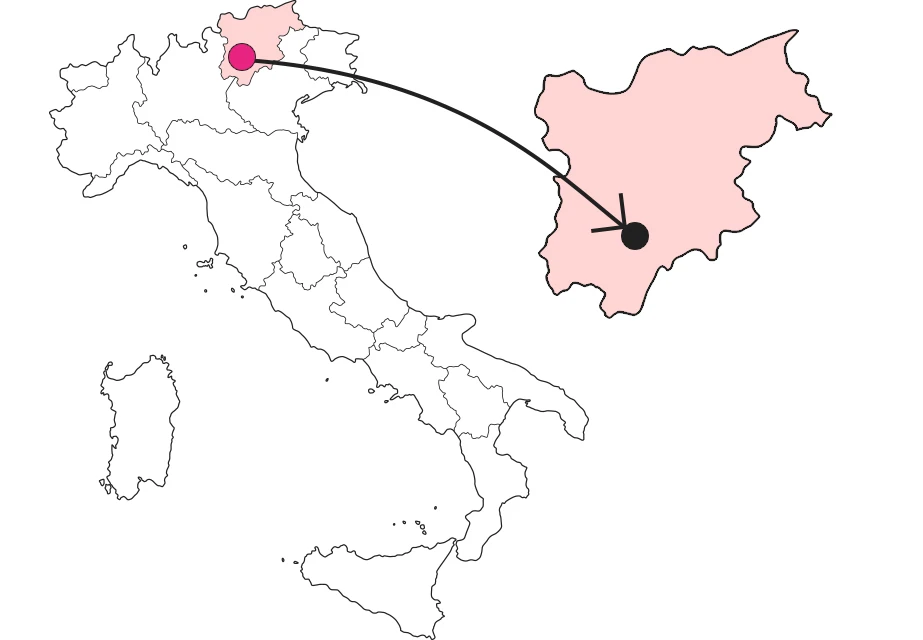SHARRYLAND


Ala, city of velvet
A thread of silk runs through the streets of Ala.



Where is

What it is and where it is
Whichever way you arrive from, what presents itself to your eyes is a row of modern houses abutting the ring road. However, if you look closely, your gaze will be drawn to the beauty beyond: to the irrigation ditch that skirts the northern flank of the town and then descends into the valley, to the climbing and layering of the roofs of the oldest houses as your gaze rises toward the mountain, and, finally, to the grandeur of the Parish Church of Santa Maria Assunta that towers over Ala's historic center.
Why it is special
Ala's uniqueness lies in a centuries-old tradition that only the streets of the historic center will be able to reveal to you, almost as if it were a secret guarded in days gone by. Passing through Contrada della Roggia and Via M. Soini you will notice some remnants of what was once a true craft center, made up of spinning mills, tanneries, sawmills and old mills. Entering the heart of the village you will pass through the narrow Via dei Vellutai, which opens onto an ancient little square from which you can catch a glimpse of the church bell tower. Here, among the nine polychrome marble altars, is the altarpiece depicting Santa Lucia, the patron saint of the velvet workers, which, therefore, at the end of your route, reveals the extreme importance that the silk market had in this area.
Not to be missed
This year, at the beginning of the second decade of July, an event entitled"Velvet City" was held, specifically on the weekend between the 12th and 14th of the month. During this period, every year, the village throws us back in time a few centuries, with the reopening of courtyards, palaces, inns and artisan workshops, with real experimentation workshops where the noble art of silk spinning can be rediscovered.
A bit of history
It was the Venetians, during their rule here, who introduced mulberry cultivation and silkworm breeding. However, it took another intervention to make Ala the velvet queen. Two Genoese exiles, expert velvet weavers, took refuge in Ala to escape the bubonic plague. The citizens of Ala went all the way to Genoa to retrieve the necessary equipment, defying the jealousy of wealthy Genoa. Thus, the technique was implanted in Ala, and its textiles became very famous in Europe. The business did not experience a crisis until the mid-19th century when traditional production was overtaken by new industries. Today it is the summer event that keeps its memory and craftsmanship alive.
Trivia
Climbing along Bonacquisto Square and past the church of Santa Maria Assunta, you can access the rectory, where a hidden treasure of inestimable historical and artistic value is kept. There you will be able to find, in fact, an entire collection of sacred objects and vestments made of genuine 18th-century Alense velvet, further important evidence of the silk trade in the Ala area.
Enter the Map of Italy's Undiscovered Wonders and find treasures where you least expect it... Inspire, Recommend, Share...
Collections
The Map thanks:
Enter the Map of Italy's Undiscovered Wonders and find treasures where you least expect it... Inspire, Recommend, Share...
Where is

Collections

